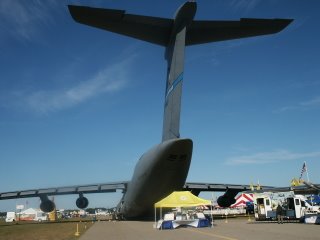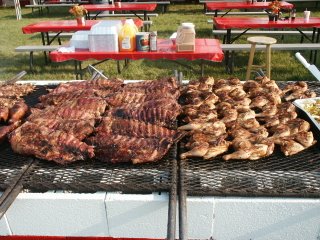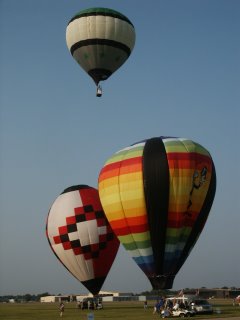Subscribe to Airspeed using iTunes, visit us at http://airspeed.libsyn.com, or use the following RSS feed. http://airspeed.libsyn.com/rss.If you’ve been listening to Airspeed for very long, you know that I have a huge thing for the space program. Although we cover a lot about airplanes and flight training here, let’s all take a moment to acknowledge the obvious. Being an astronaut is being at the pinnacle of aviation and aerospace. Ever since NASA selected the first seven astronauts, these men and women have captured our imaginations and been examples of what humans can achieve. They’re not the only examples, mind you, but they’re high on the list and they deserve most or all of the admiration that goes their way.
Everybody knows, or should know, the names Cooper, Grissom, Slayton, Glenn, Carpenter, Schirra, and Shepherd. Many know the names Ride, Collins, and Lininger.
But to you know Smith and Garcia? Bob Smith and Carmen Garcia are middle school students. Bob lives in a suburb in the Midwest and likes to study weather and computers. Carmen lives in New Jersey and loves chemistry and animals. Both take their studies seriously. Bob’s mom took him to the Very Large Array in New Mexico last summer and Carmen’s dad is a pilot for a regional airline. They’ll become good friends when they’re assigned to a long-duration flight on the next-generation International Space Station.
Okay, I made up both Bob and Carmen, but the fact of the matter is that this is how it starts. At some point, whether in middle school, high school, college, or whenever, a person gets bitten by the space bug.
But here’s the thing. Most people have no idea how one gets to be an astronaut. And it’s possible and even likely that many potential astronaut candidates – even ones who might be better astronauts than many already in the astronaut corps – never even apply because they don’t know the requirements or because they make a decision along the way that, though small in and of itself, makes them ineligible.
So I thought, hey! Let’s do a show or two about what it takes to become an astronaut. NASA’s technical requirements, some characteristics that seem to give a person a better or worse chance of selection, and whatever else I can dig up.
So here it is. Part 1 of a three-part series I’m calling “So You Want to Be an Astronaut.” Let’s call this episode “Qualifications.”
This information is based on the best information I could find on the net. NASA itself doesn’t appear to have a lot of information out there. Most of the links to materials like the astronaut application are dead at the moment. Some of the information dates back to 1997. And that’s probably reasonable, considering that the shuttle fleet is probably going to be retired soon and NASA is probably working on coming up with the next set of requirements for astronauts based on what astronauts will need to know or be able to do for the next generation of space vehicles and missions.
This is all based primarily on the criteria that NASA has used for the STS-era (that’s Space Transportation System or “Space Shuttle” era). I can’t imagine that the criteria are going to change much. NASA has been at this awhile and probably has a pretty good idea of what makes a good astronaut regardless of the equipment or mission.
If you’re listening with the idea that you might want to become an astronaut (and if you are, you’re the primary audience here) bear in mind that the criteria may already have changed and, if you’re planning to apply ten or fifteen years down the road, things will probably be even more different. Don’t rely entirely on this information. If you’re going to make life-changing decisions because you want to be an astronaut, do your own research and, better yet, contact NASA yourself. Don’t go changin’ to try and please me.
Remember through all of this that I don’t have any particular “in” with NASA. I’ve simply done a bunch of research for you and I’m presenting it to you in a mildly entertaining way. If you happen to hear something that ain’t so, please e-mail me at
steve@airspeedonline.com and I’ll be happy to correct or update the information.
Okay, on with the information.
NASA brings in two kinds of astronauts that we care about. Note that we’re not going to talk about payload specialists here because those folks come through a path that is largely dictated by the contracting foreign government or foreign or domestic institution.
Most astronauts come in on either the commander/pilot track (I’ll refer to those folks simply as “pilots”) or the mission specialist track. Pilots fly spacecraft. Those that are commanders have responsibility for the entire mission, as actually doing stick and rudder operations. Pilots may also help with deployment of satellites and other operations. Mission specialists work with the pilots, but primarily handle systems operations, conduct experiments, and do most of the meat-and-potatoes scientific work on the spacecraft.
Physically, pilots have to be able to pass a NASA Class I space physical, the requirements for which are very similar to those of an FAA Class I medical certificate. Among the requirements are vision of 20/70 or better uncorrected, correctable to 20/20, in each eye. Blood pressure can’t be higher than 140/90 in a seated position. Height has to be between 64 and 76 inches. I guess you have to be tall enough to reach the pedals and short enough so that the instrument panel of a T-38 won’t take off your kneecaps if you have to eject.
Mission specialists have to be able to pass a NASA Class II space physical, which, again, is similar to the equivalent class of FAA medical certificate. Vision has to be at least 20/200, correctible to 20/20 in each eye. The maximum blood pressure is the same, but your height can be between 58.5 inches and 76 inches. Apparently, the pedals in the shuttle are further away than they are in the T-38.
Lest you think that NASA will take expert pilots who don’t know much other than aviation, there are stringent educational requirements. An astronaut candidate must have at least a bachelor’s degree from an accredited institution in engineering, biological science, physical sciences, or mathematics. Be careful how you pick your major. Degrees in “technology” (like Engineering Technology and Aviation Technology) don’t qualify. Certain kinds of psychology don’t work either.
Mission specialists also have to have three years of related, progressively responsible professional experience after the bachelor’s degree. Advanced degrees are preferred, and NASA lets you substitute a master’s degree for one year of experience and a doctorate covers all three years.
Pilots have to have at least a thousand hours of pilot-in-command time in jet aircraft and they really prefer flight test experience. Remember that the earliest astronauts were all test pilots and NASA has really fond memories of those guys.
You must also be a US citizen.
Civilians apply directly to NASA. NASA takes applications on a continuous basis and then selects new astronaut candidates from the pool of applications every couple of years or so. Military applicants apply through their branch of the armed services and that branch makes recommendations to NASA of the candidates that apply.
That’s it for Part 1 of “So You Want to Be an Astronaut.” In the next episode, we’ll cover the selection process and the astronaut candidate training and evaluations.






 Wandered the field a little andscoped out the concessions. Good-looking barbecue for starters. Turkey legs, ribs, chicken - you name it. And the usual assortment of elephant ears, lemonade, sausage, and other stuff.
Wandered the field a little andscoped out the concessions. Good-looking barbecue for starters. Turkey legs, ribs, chicken - you name it. And the usual assortment of elephant ears, lemonade, sausage, and other stuff.





